Garmin Enduro review: Trail running watch with mind-blowing battery life
Expensive it might be, the battery life of the Garmin Enduro is just simply unbelievable, not to mention the exciting new trail running and MTB features

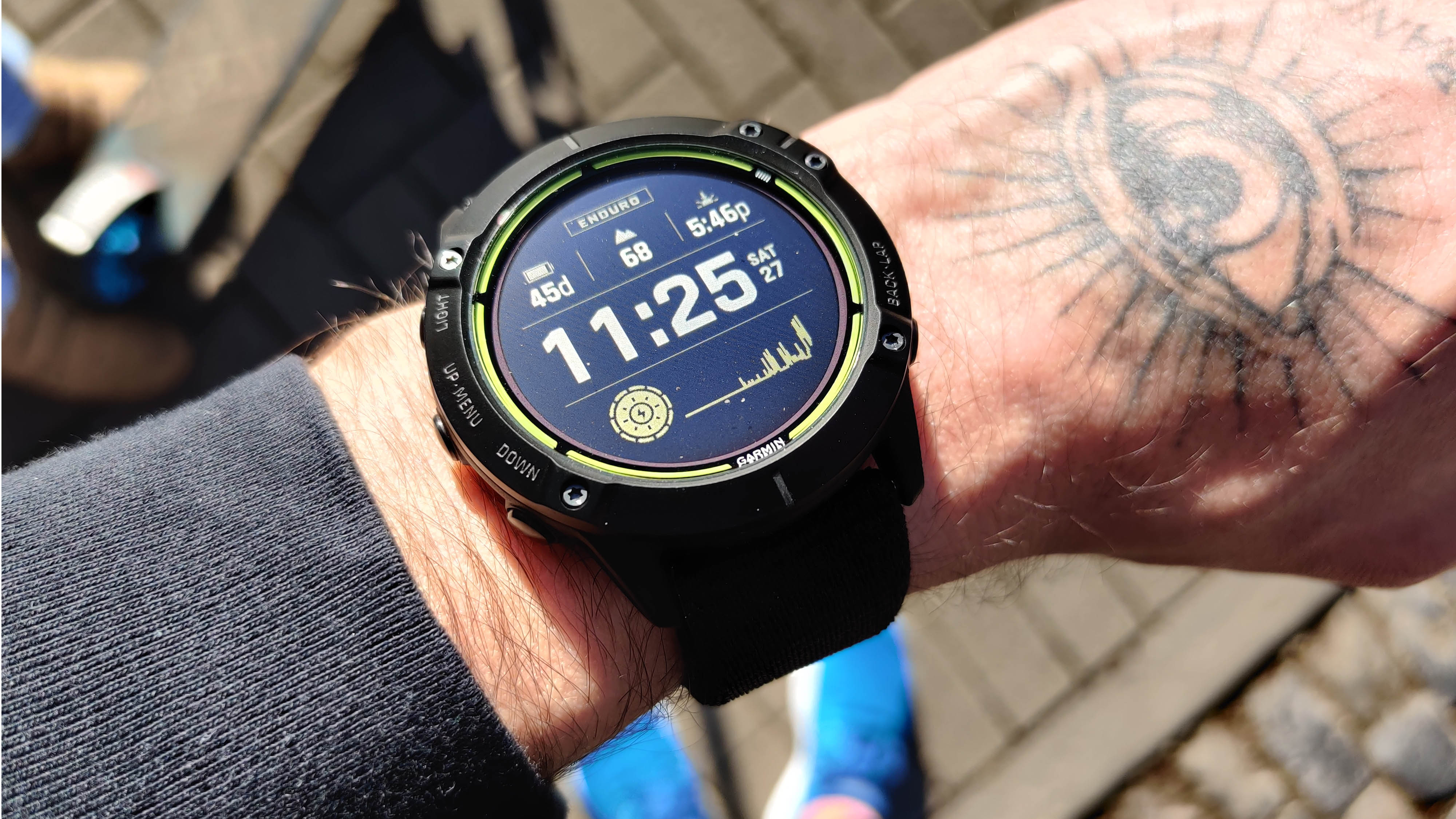
The Garmin Enduro is a GPS multisport watch with an insanely long battery life and some trail running-specific features that even non-trail runners will appreciate. Choose the Enduro if you are torn between the Fenix 6 and the Forerunner 945 and have this much money to spend on a running wearable. You won't be disappointed.
-
+
Superb build quality
-
+
Battery life is just crazy
-
+
Familiar Garmin user interface
-
+
New, trail-running specific features
-
-
Ultra-long trail running is rather a niche market
-
-
No offline music
Why you can trust T3

Garmin Enduro review TL;DR: Garmin's latest running watch fills another niche gap in the running watch market, adds solar charging and combines the best features of the Fenix and Forerunner series.
A typical conversation at the Garmin HQ, trying to come up with the next best Garmin watch idea, is as follows.
Team Leader: "We haven't released a new running watch in three months, guys, we must put something out soon, or else..."
Team Member: "How about a good mid-range watch?"
Team Leader: "We already have the Garmin Forerunner 245."
Team Member: "High-end running watch?"
Team Leader: "Garmin Forerunner 945."
Get all the latest news, reviews, deals and buying guides on gorgeous tech, home and active products from the T3 experts
Team Member: "Maybe a watch geared towards triathletes?"
Team Leader: "Nah, the Garmin Forerunner 745 is perfectly fine for them."
Team Member: "New outdoor watch?"
Team Leader: "There are 29 different versions of the Garmin Fenix 6, surely we covered all bases there."
Team Member: "Wait! I've got it: we can create a watch with extra-long battery life for endurance trail runners who like the ruggedness of the Fenix 6 but don't much care about POI navigation and want a watch that also carries most features of the Forerunner 945. We can also add solar charging."
Team Leader: "Boom. That's the one."
And so the Garmin Enduro was born.
Garmin Enduro: Price, availability and what's in the box
The Garmin Enduro is available to buy from 15 February 2021 at Garmin US and Garmin UK.
The Garmin Enduro comes in two versions: the standard Enduro comes with a steel bezel and costs $799.99 / £699.99 or there is the even more premium Carbon Grey DLC Titanium version for $899.99 / £799.99.
In the box, you'll find the watch itself, a user guide and a charging cable.
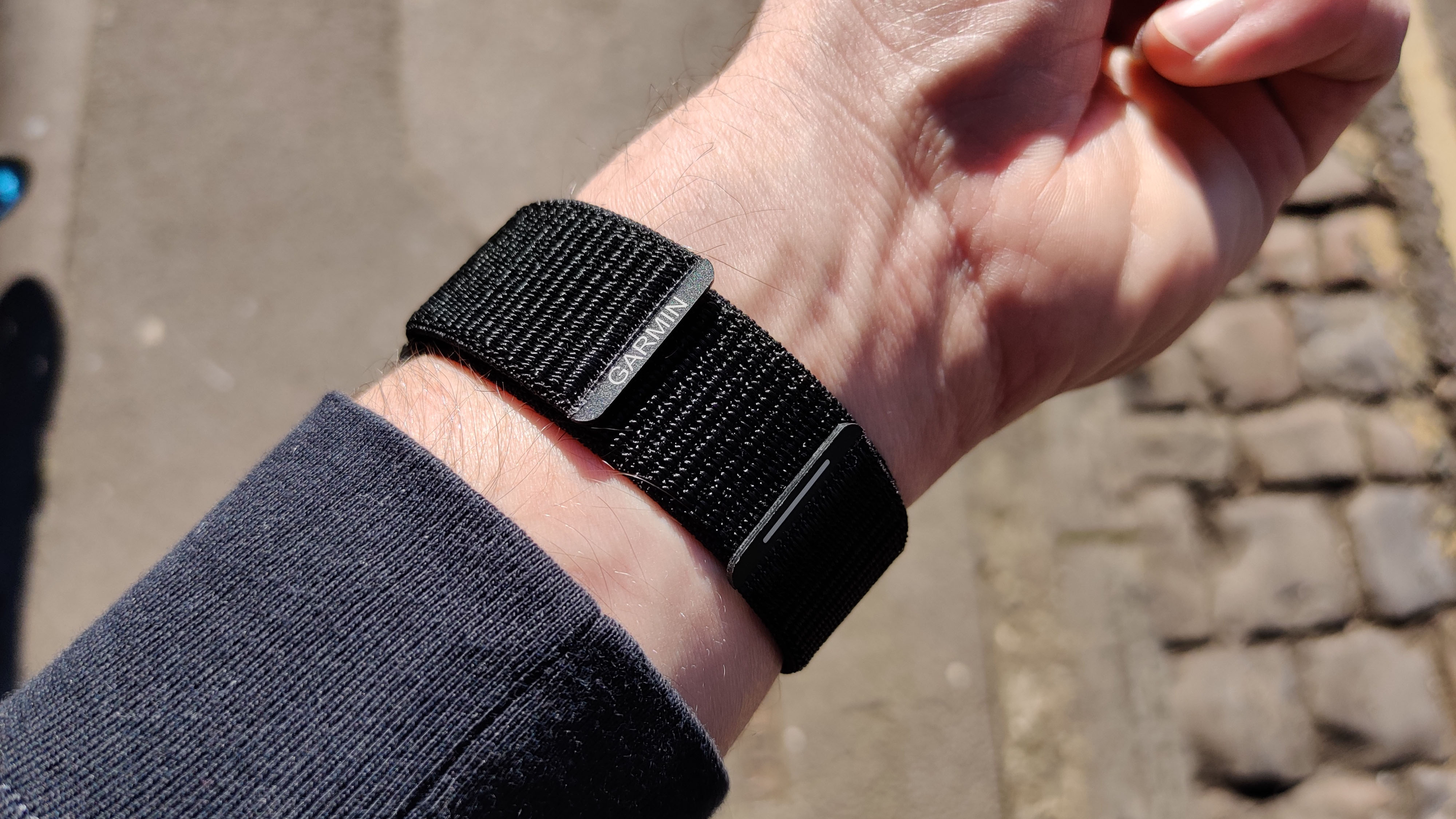
Garmin Enduro review: Build quality and ergonomics
The Garmin Enduro looks quite similar to the Garmin Fenix 6: wearing the tested steel case variety felt eerily similar to wearing the Fenix 6, a watch I often strap on my wrist. The metal bezel gives the watch an indestructible feel, although the actual case is 'only' fibre-reinforced polymer with a metal rear cover (a.k.a. plastic).
The Enduro also features the Power Glass solar charging lens, something we've already seen in the Garmin Instinct Solar and the Garmin Fenix 6x Pro Solar. The twist here is that the Enduro has a monster battery life anyway and also adds solar charging. The result is a watch that can go for a long time before it needs charging.
I'm not saying it will function indefinitely using solar power only, especially if the GPS is often turned on. In theory, the Instinct Solar can do just that, although only in battery saver mode and considering it gets ample amount of sun exposure. All that said, the Enduro's battery life is pretty darn impressive: if you don't use the GPS for hours every day, I don't think it needs charging more often than once a month.
One new feature definitely worth mentioning is the new UltraFit nylon strap. Now, this is not a revolutionary feature – many other GPS multisport watches have nylon straps – but it works really well on the Enduro. Considering the size and the weight of the watch (71 grams with the strap), it's great that you can adjust the strap so it fits your wrist perfectly. Not only it's more comfortable to wear the watch but it can also improve heart rate readings without having to overtighten the watch.
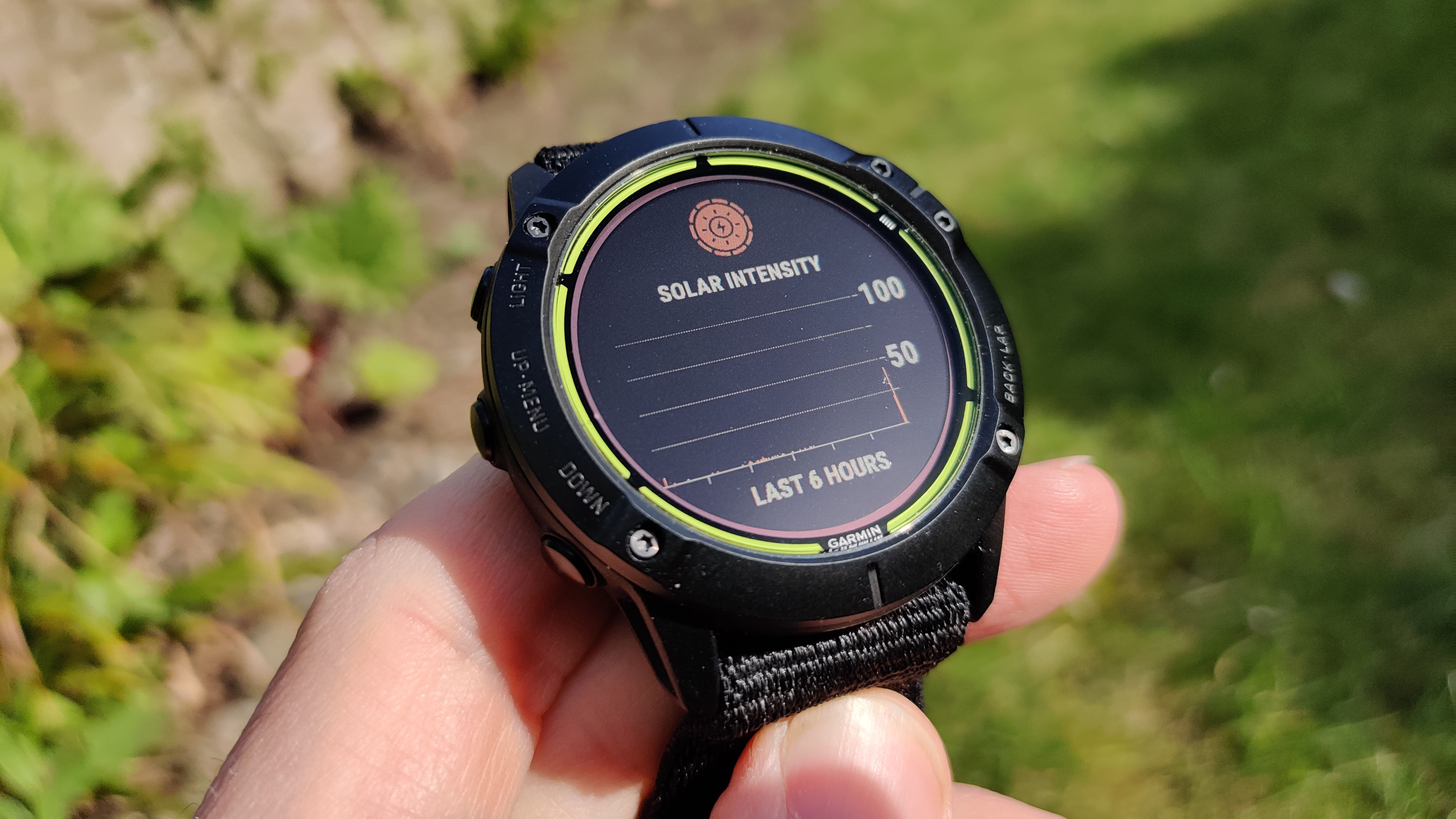
Garmin Enduro review: Features and user interface
The user interface and navigation of Garmin Enduro is the carbon copy of the Fenix 6: no touchscreen, five-button navigation, widget view, the whole lot. If you used a Garmin watch in recent years, you will know where to find all the features you need.
Naturally, the Garmin Enduro offers health and wellness features including wrist-based heart rate, Pulse Ox sensor for altitude acclimation and advanced sleep tracking. Also included is Garmin’s Body Battery feature that monitors all health data to gauge energy levels, which can help with scheduling workouts and rest times.
You can probably tell that the Enduro is a large watch. Wearing it in bed will not be the same as strapping the Fitbit Versa 3 around your wrist: I was genuinely concerned about accidentally giving myself or my partner a black eye wearing the watch in bed. Kudos to those who can sleep wearing such a bulky watch and if you are one of those people, great, knock yourself out (not literally, hopefully). Wearing the Enduro in bed will help the watch better calibrate the Body Battery feature and also offer more precise recovery suggestions in general.
Just like the Fenix 6, the Enduro has way too many features to list in one article. If you can think of a metric or sensor that's used in a running watch, the Enduro has that too, and more. You'll find stuff like heat and altitude acclimation feature that tracks "how your body is holding up in different environments", ABC sensors and even hydration tracking.
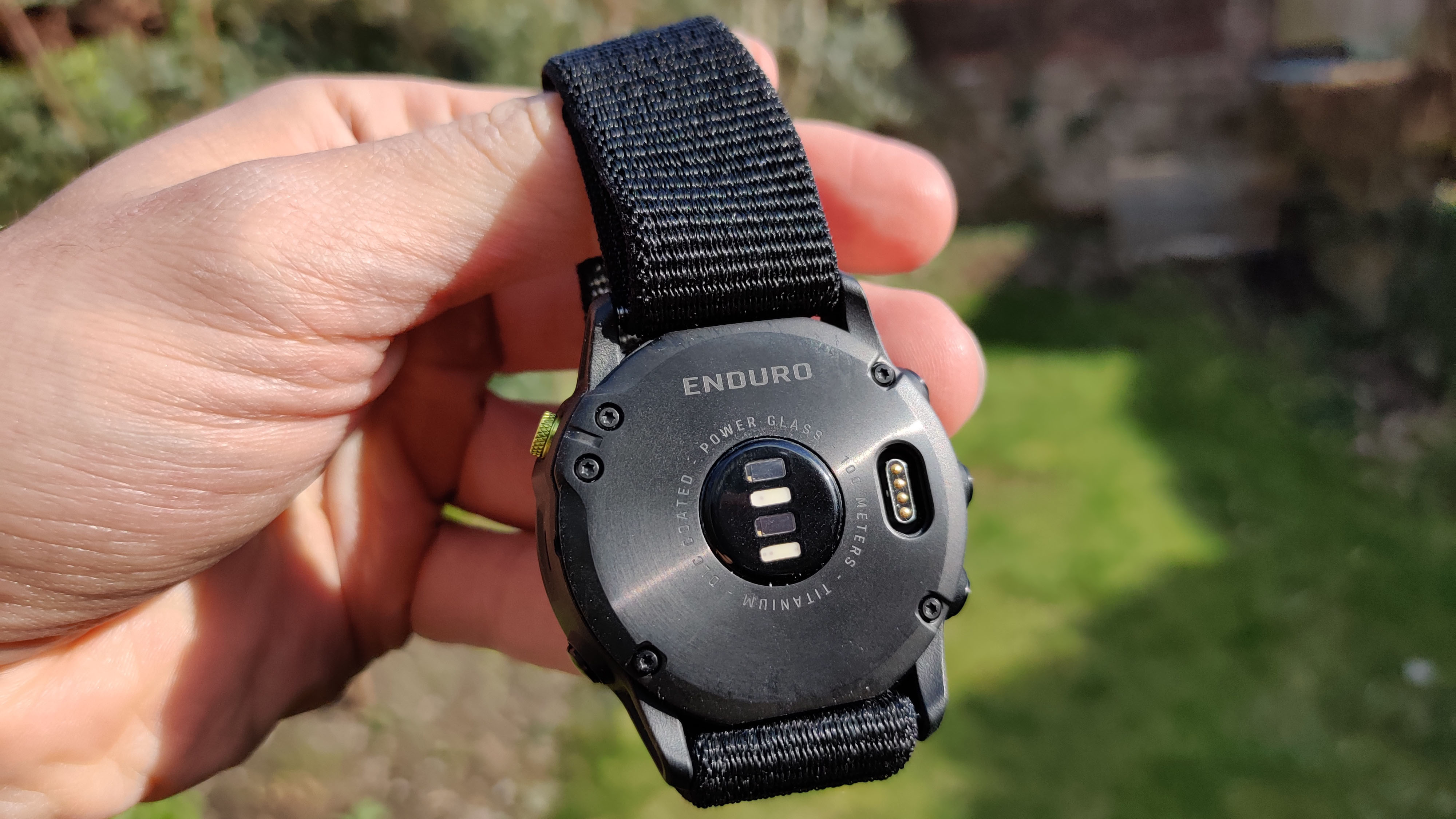
Garmin Enduro review: Activity tracking and precision
The Enduro is equipped with navigation and connectivity features including access to multiple global navigation satellite systems (GPS, GLONASS and Galileo) as well as the aforementioned ABC sensors: an altimeter for elevation data, and a barometer to monitor the weather and a 3-axis electronic compass.
As expected, the Enduro picks up GPS signal fast and I haven't experienced any glitches on the map view after outdoor workouts. The heart rate sensor is Garmin's latest Elevate OHR and can be considered gold-standard when it comes to tracking high-heart rate activities. Not to mention, Garmin sends software updates to its watches often so the precision gets better by the day, usually.
There are some new 'augmented' trail features, including 'Trail Run VO2 Max', which is based on running performance related to trail conditions and adjusted to the environment through heat and altitude acclimation, 'ClimbPro Trail Enhancements', which allows you to get real-time information on the current and upcoming climbs including gradient, distance and elevation gain and 'Rest Timer', which features a rest timer to log the time spent at aid stations in Ultrarun mode.
These can be turned on in the run settings (by pressing the 'up' button after selecting the 'run' or 'trail run' activity) and to be honest, I don't see much point in turning these off unless you live in an area where the ground is completely flat, in which case you don't really need the Garmin Enduro anyway. Having all the extra features turned on might use more battery but it might just mean that you have to charge the watch every 25 days as opposed to 28.
There is also a Mountain Biking mode which tracks details of every MTB ride with mountain biking metrics plus "specialised grit and flow measurements that rate trail difficulty and track the time of descent" plus a Recovery Advisor feature that recommends how long to rest before another big effort and the next workout based on sleep and wellness data. I haven't had the chance to try this out, unfortunately.
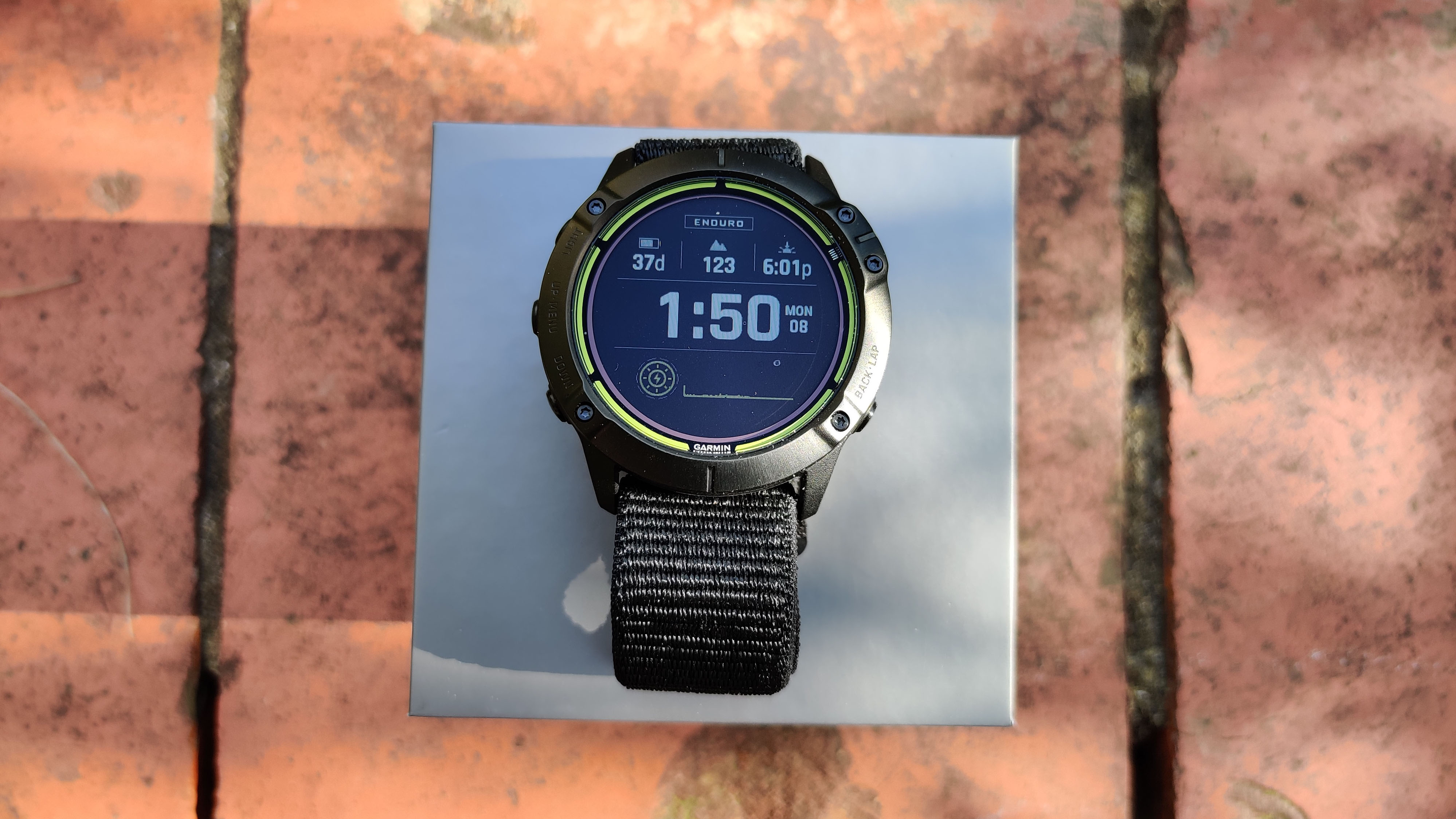
Garmin Enduro review: Verdict
Despite the Garmin Enduro being tailored to a very niche market, many others can also benefit from wearing the watch. Sure, the extra-long battery life will come in handy if you're an endurance trail runner but if you're happy to spend this much money on a watch and torn between the Fenix 6 and the Forerunner 945, I would recommend the Enduro for you as I'm sure you'll love it.
The same goes for the new trail-specific features: even if you mostly run in urban environments, having features onboard that take incline into account when calculating VO2 max will help get more accurate results without going off the beaten path. Will other Garmin watches get this feature too? If the Forerunner 945 will, I would probably recommend getting that instead as it is much cheaper, although no other Garmin watch can match the battery life of the Enduro right now, including the Forerunner 945.
The only reason to choose the Fenix 6 over the Enduro is if you like point-of-interest navigation on the watch. The Fenix 6 has offline TOPO maps which are quite cool but if you prefer long battery life over wrist-based navigation, you're better off with the Enduro. Some Fenix 6 models can be bought for cheaper but similar-sized versions retail for roughly the same price as the Enduro.
As for the price, I can only imagine the Enduro would be cheaper without the Power Glass and in all honesty, taking into account the long battery life I don't think it was necessary to add the solar charging feature but I also think that it suits the Enduro to have this feature onboard. The Garmin Enduro is not a watch you'll use for a year or so and throw away and all the premium features will help it retain its value for a longer period of time.
Garmin Enduro review: Also consider
Trail runners might already be familiar with the Suunto 9 Baro, an ultra running favourite watch released in 2019. The battery life is not quite as good as the Enduro's but the Suunto 9 Baro features a storm alarm, so you can find shelter in time, or just skip outdoor training altogether, depending on your mood. the Suunto 9 Baro also costs way less than the Enduro.
The Polar Vantage V2 is a watch of many qualities. Its built quality is excellent and definitely a step up from the original Vantage V. It has loads of useful tests and data for serious runners and cyclists to better their form and get ready for races more efficiently. Better still, most of the tests and data provided by the Vantage V2 can't be found elsewhere, making it all the more appealing for the information-thirsty athletes.

Matt Kollat is a journalist and content creator who works for T3.com and its magazine counterpart as an Active Editor. His areas of expertise include wearables, drones, fitness equipment, nutrition and outdoor gear. He joined T3 in 2019. His byline appears in several publications, including Techradar and Fit&Well, and more. Matt also collaborated with other content creators (e.g. Garage Gym Reviews) and judged many awards, such as the European Specialist Sports Nutrition Alliance's ESSNawards. When he isn't working out, running or cycling, you'll find him roaming the countryside and trying out new podcasting and content creation equipment.